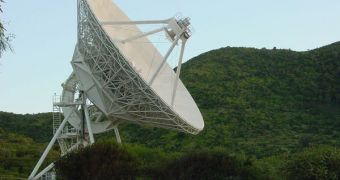Scientists from the University of Missouri have recently announced that they've created the most precise measurements to date of the curvature of space caused by the Sun's gravity in our solar system. The research was conducted using the National Science Foundation's (NSF) Very Long Baseline Array (VLBA) radio telescope, which is made up of antennas spread all over the North American continent. Their results could also contain the necessary data for advancing the frontiers of basic science, the team reveals. The full results appear in the July 10th issue of the Astrophysical Journal.
“Measuring the curvature of space caused by gravity is one of the most sensitive ways to learn how Einstein's theory of General Relativity relates to quantum physics. Uniting gravity theory with quantum theory is a major goal of 21st-century physics, and these astronomical measurements are a key to understanding the relationship between the two,” UM expert Sergei Kopeikin, the leader of the research team, explains. Scientists from the National Radio Astronomy Observatory (NRAO) and the NASA Jet Propulsion Laboratory (JPL), in Pasadena, California, have also contributed to the research.
Albert Einstein's theory of General Relativity, published in 1916, predicted the curvature of space-time around massive cosmic objects such as stars and black holes. With the new VLBA study, this phenomenon was measured to the greatest extent possible at the moment, within a tolerance margin of one part in 30,000. Einstein said at the beginning of the last century that starlight was prone to being bent by the effects of gravity, provided that the force was generated by an object large enough.
Space curvature and gravitational light-bending is a process that physicists call “gamma.” According to Einstein, gamma should be equal to 1.0. “Even a value that differs by one part in a million from 1.0 would have major ramifications for the goal of uniting gravity theory and quantum theory, and thus in predicting the phenomena in high-gravity regions near black holes,” Kopeikin says. Therefore, increasingly precise measurements of gamma need to be conducted, and the VLBA will probably remain at the forefront of these investigations, as the largest and most powerful radio telescope in the world.

 14 DAY TRIAL //
14 DAY TRIAL //